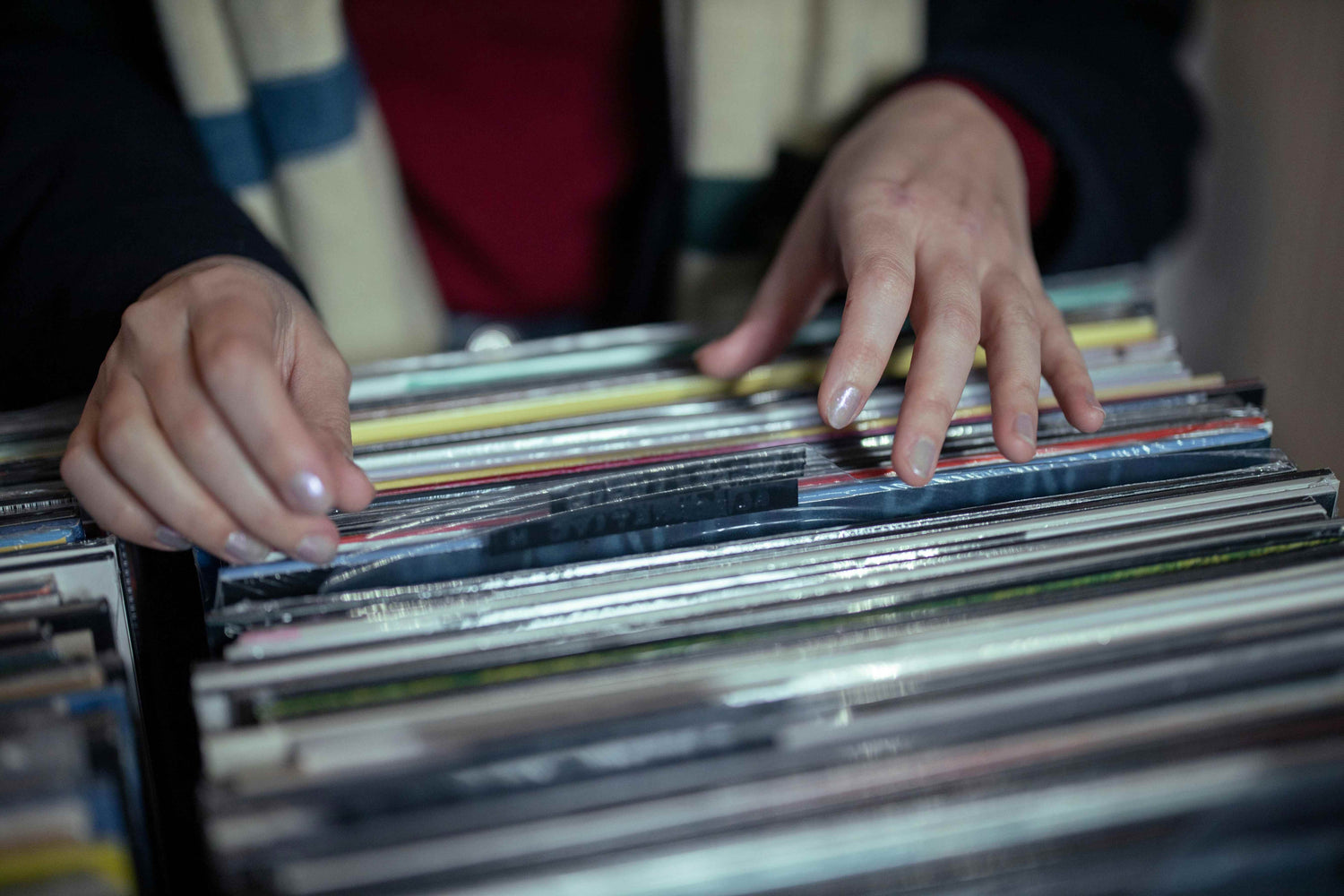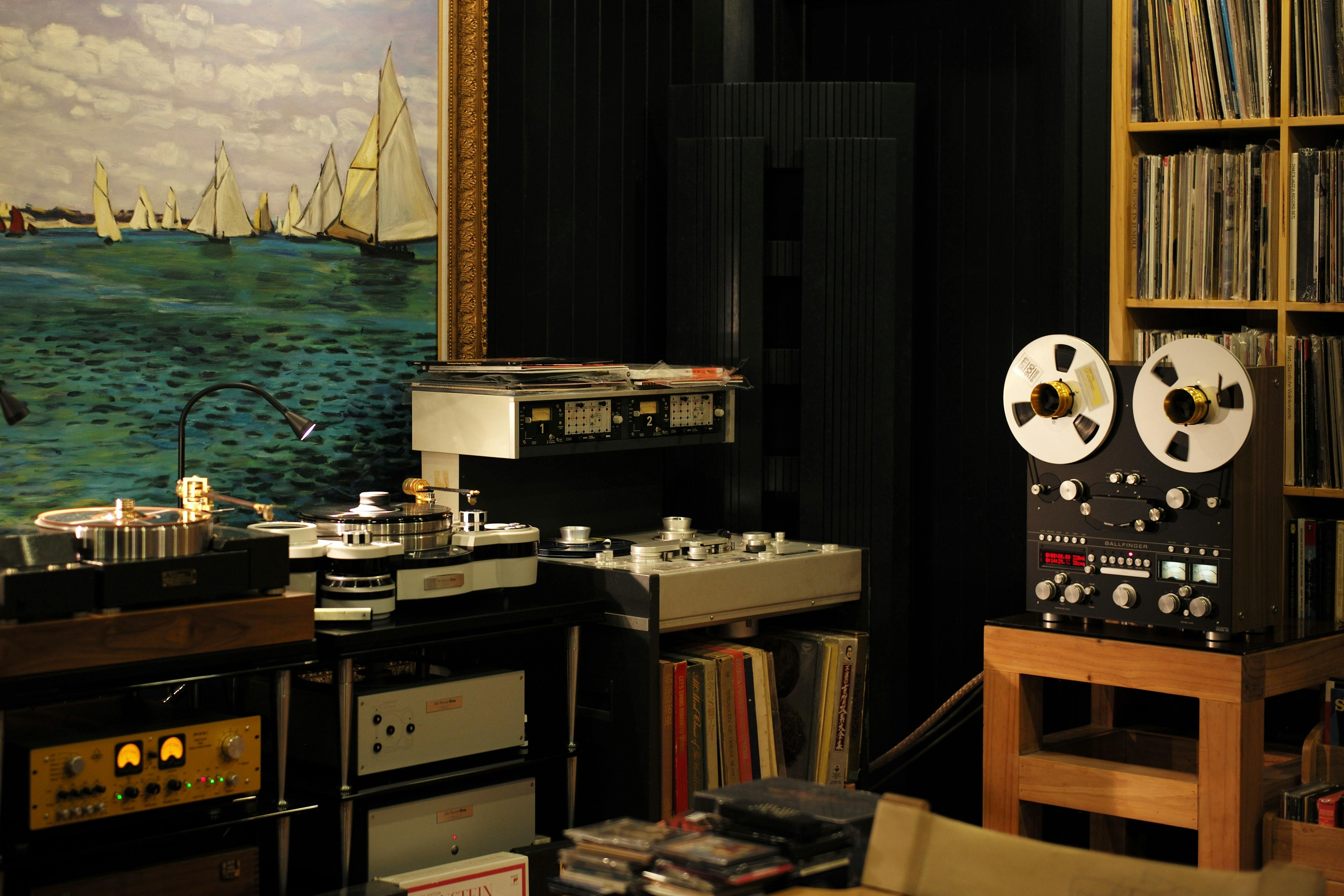The allure of vinyl is undeniable: the tactile ritual, the expansive artwork, the warm sound. And then there's the dream of taking that experience anywhere – a picnic, a friend's place, a small apartment where a full hi-fi rig is a distant fantasy. Enter the portable turntable with built-in speakers. Now, let's pause. As a dedicated audiophile, my heart typically yearns for the precision of a well-calibrated tonearm, the nuance of a moving coil cartridge, and the immersive soundstage of separate speakers. Portable all-in-one players, especially the ubiquitous "suitcase" variety, are, by their very nature, a study in compromise.
However, to dismiss them outright is to ignore their genuine appeal and specific use cases. They can be a fun, accessible entry point into vinyl, a nostalgic novelty, or simply the most practical way to enjoy your records on the go. The key is to approach them with realistic expectations and to understand what you're actually getting. At XJ-HOME, while we champion the pursuit of ultimate sonic fidelity, we also believe that the joy of music shouldn't be gatekept. Sometimes, good enough for the moment is good enough.
So, let's cut through the marketing hype and the purist scorn. What makes a "best" portable turntable with built-in speakers, and what should you really look for?
The Unvarnished Truth: What You're Getting (and Not Getting)
Before we name names, understand the landscape:
-
Sound Quality: Built-in speakers are small. Physics is a harsh mistress. Expect sound that's functional, perhaps even surprisingly decent for its size in the better models, but it won't compete with even a modest component system. Bass will be limited, and clarity can suffer at higher volumes.
-
The Mechanism: Most of these players use a very similar, mass-produced turntable mechanism. Tonearms are typically basic, often plastic, with fixed counterweights (or none to speak of) and ceramic cartridges.
-
Tracking Force & Record Wear: Ceramic cartridges require heavier tracking forces (often 4-6 grams or more) than the magnetic cartridges found in hi-fi turntables (typically 1.5-2.5 grams). While the old fear of these "ruining records" instantly is often overstated for casual play of common pressings, it's undeniable that they will cause more groove wear over repeated plays than a properly set up hi-fi stylus. For your rare first pressings or audiophile editions? I'd steer clear. For thrift store finds and fun listening? It's a calculated risk.
-
Build Quality: "Suitcase" designs are prized for portability and retro aesthetics, but build can range from surprisingly sturdy to alarmingly flimsy.
-
Features: Bluetooth (usually as a receiver to play music from your phone to the turntable's speakers), headphone jacks, and RCA line-out (a crucial feature if you ever want to connect to better speakers) are common. Some offer USB recording or battery power.
Defining "Best" in a World of Compromise
Given the above, "best" in this category means:
-
Relatively Better Sound: Speakers that don't sound like a tin can, perhaps with a bit more fullness than the absolute bottom-tier.
-
A More Considerate Mechanism (if possible): Some newer designs are showing slight improvements, perhaps a slightly better stylus or a more stable platter.
-
Useful, Functional Features: Reliable Bluetooth, a usable line-out, decent battery life if applicable.
-
Acceptable Build & Aesthetics: It should feel like it can survive a few trips and look reasonably good doing it.
-
Value for Money: Does it deliver on its promises for its price point?
Top Picks: Navigating the Portable Landscape (Circa 2024/2025)
This isn't an endorsement of these as high-fidelity devices, but rather a nod to models that seem to rise above the general sea of mediocrity in the portable, all-in-one space. Prices are approximate and can vary.
-
Victrola Revolution GO
-
The Pitch: A clear attempt to offer a step up in the portable market, focusing on better sound (for its class) and true portability with a rechargeable battery and carry strap.
-
Pros: Often cited for having noticeably better built-in speaker quality than typical suitcase players. Features a magnetic cartridge (Audio-Technica AT-3600L) which is a significant step up from basic ceramic ones, meaning gentler tracking and better sound potential. Rechargeable battery offers genuine take-it-anywhere convenience. Bluetooth output and input.
-
Cons: Pricier than basic suitcase models ($150-$200). While the cartridge is better, the tonearm and overall build are still lightweight compared to component turntables.
-
Best For: Those who prioritize portability and want the best possible sound from an all-in-one battery-powered unit, and are willing to pay a bit more for it.
-
-
Crosley Cruiser Deluxe / Cruiser Plus
-
The Pitch: The quintessential suitcase player, now with some modern conveniences.
-
Pros: Iconic retro design available in countless colors. Very affordable ($70-$100). Plays 3 speeds. Typically includes Bluetooth input and pitch control. Headphone jack and RCA out. It's the entry ticket for many.
-
Cons: Sound quality from built-in speakers is basic. Uses a ceramic cartridge and a simple tonearm – handle with care and don't expect miracles or archival-level record preservation. Build quality can be variable.
-
Best For: Casual listeners, nostalgic appeal, those on a very tight budget, or as a fun, occasional-use player. A good resource for understanding turntable basics, including cartridge types, is often found on sites like Audio Advice or similar educational audio blogs.
-
-
Angels Horn H019 / Similar "Audiophile-Lite" Portables
-
The Pitch: Often marketed as a step above basic suitcase players, sometimes featuring a wooden plinth look and an upgraded cartridge.
-
Pros: Some models (like specific Angels Horn versions) come with an Audio-Technica AT3600L magnetic cartridge, which is a big plus for sound and record care compared to ceramic. May have slightly better built-in speakers or a more solid feel than the cheapest options. Often include Bluetooth input and RCA outputs.
-
Cons: Price can creep up ($100-$200+). "Portable" might be more about being easily movable around the house than true on-the-go battery power for some models in this style. The "all-in-one" nature still means compromises compared to separates.
-
Best For: Someone wanting an all-in-one solution with slightly better audio aspirations than a basic suitcase player, perhaps for a dorm room or small office, who still values the integrated speaker convenience.
-
-
Victrola Re-Spin
-
The Pitch: A modern take on the suitcase player, sometimes with an emphasis on more sustainable materials and improved bass response for its class.
-
Pros: Aims for better sound than standard suitcase players, particularly in the low end, thanks to different speaker enclosures. Often made with some recycled plastics. Removable lid that can display albums is a neat touch. Typically priced attractively ($70-$100).
-
Cons: Still a suitcase player at its core with a ceramic cartridge and basic tonearm. "Improved bass" is relative to other tiny speakers.
-
Best For: Eco-conscious beginners or those looking for a slight sonic edge over the most basic suitcase models without a big price jump.
-
Making the Most of Your Portable Player (and Minimizing Harm)
-
Handle With Care: These are not ruggedized devices.
-
Clean Your Records: Even on a portable, a dusty record will sound worse and wear out the stylus (and itself) faster. A simple carbon fiber brush helps.
-
Don't Expect Miracles: Enjoy it for what it is – a convenient way to play records.
-
Use the Line Out (If You Can): If your player has RCA line-out jacks, connecting it to even a pair of inexpensive powered bookshelf speakers will almost always be a massive sound quality upgrade over the built-in ones. This is often the best path to better sound without ditching the player entirely.
-
Stylus Replacement: Even ceramic styli wear out. If things start sounding fuzzy or distorted, a new stylus (they're usually very cheap and easy to replace on these models) might be needed.
The Final Groove
Portable turntables with built-in speakers occupy a specific niche. They're not going to satisfy the discerning audiophile looking for critical listening, but they can absolutely provide joy, convenience, and a fun way to engage with vinyl. It's about matching the tool to the task. Understanding their limitations, choosing the best you can within your budget, and treating your records with reasonable care will help you get the most enjoyment from them. And who knows, that fun portable player today might just be the gateway to a deeper appreciation for vinyl and higher-fidelity systems tomorrow – a journey we at XJ-HOME (https://xenonjade.com) are always thrilled to see people embark upon.





Leave a comment
All comments are moderated before being published.
This site is protected by hCaptcha and the hCaptcha Privacy Policy and Terms of Service apply.